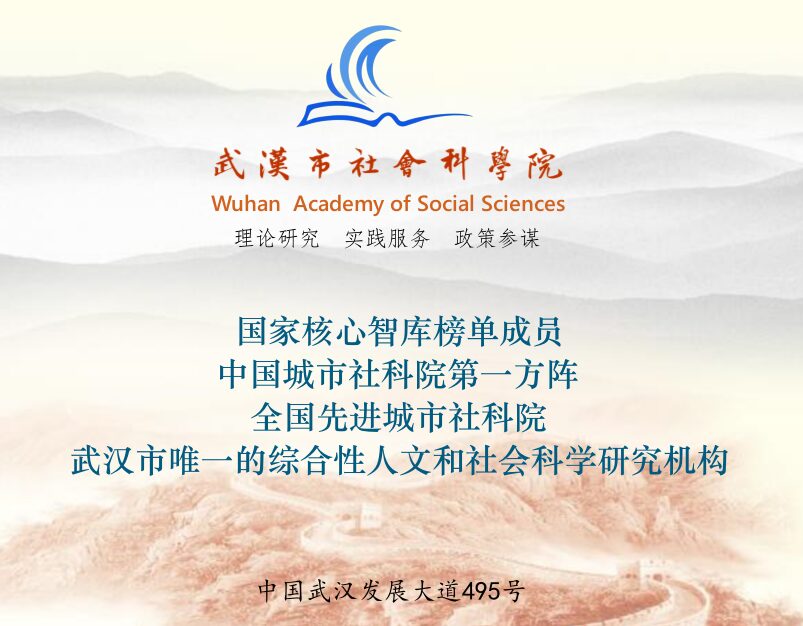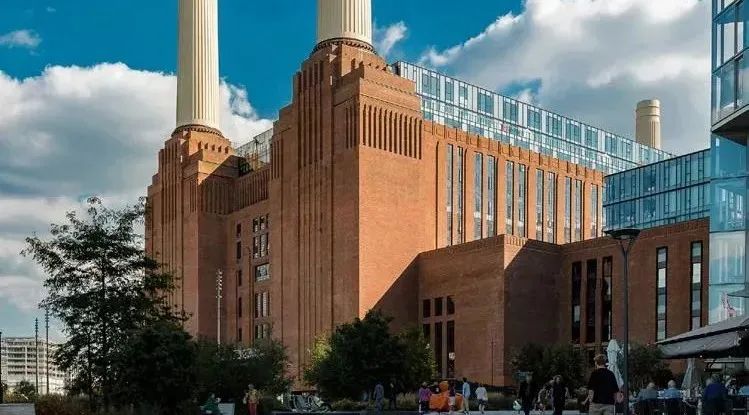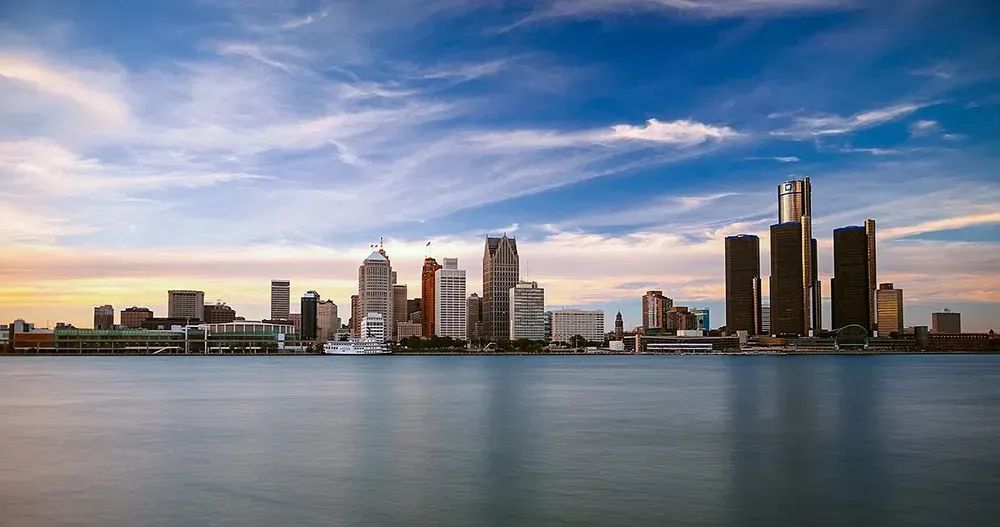
1. Research Background
1. Digital technology is an important means for modern urban community construction and governance
Currently, digital reform has become a new direction for modern urban development and is one of the cores of building “future communities”. The deep integration of digital technology and community construction enriches the tools and means of community governance. For example, applying high-tech such as the Internet of Things, big data, and artificial intelligence to provide full-life chain services in communities makes living environments greener and more low-carbon; introducing intelligent monitoring systems for comprehensive monitoring of public safety, environment, and traffic, allowing for timely detection and handling of various safety hazards; providing personalized service support for communities, such as online education, telemedicine, and e-commerce, to meet the diverse living needs of residents.
Moreover, the application of digital technology promotes the innovative development of embedded service facilities in communities, constructing information platforms for intelligent management, providing new models and methods for the construction, operation, and governance of facilities, and offering more diverse, efficient, and refined daily life services for community residents.
2. The practice experience of building “future communities” in Zhejiang Province is gradually enriching
The construction of future communities is an important grasp for efficiently promoting urban renewal. The concept of “future communities” was first proposed by the Zhejiang provincial government in 2019. In March of the same year, the “Pilot Work Plan for Future Community Construction in Zhejiang Province” was officially issued, proposing a people-centered design framework, emphasizing the synergy between hardware upgrades and software quality improvement, covering various scenarios of urban life and providing standards for future community construction work, better promoting the transition of future communities from concept to implementation and practice. Currently, the pilot work for future communities in Zhejiang Province is steadily advancing, leading the nation in the practice of future community construction, and the work in various counties and districts within the province is still progressing steadily. As the practical experience of future community construction gradually enriches, it has also attracted widespread attention from scholars in various disciplines, leading to research on public service supply models, characteristics of community construction and governance models, and localized design of communities.
3. Various places are actively carrying out the construction practice of community embedded service facilities
In November 2023, the National Development and Reform Commission, together with relevant departments, jointly studied and formulated the “Implementation Plan for the Construction of Embedded Service Facilities in Urban Communities” (hereinafter referred to as the “Implementation Plan”), aimed at promoting the extension of public service projects to cover the entire community, gradually filling the gaps in high-quality life community services, improving the urban community service system, and enhancing the ability of urban communities to support the beautiful life of the people.
Currently, some communities have begun construction practices, and based on existing experiences and construction models, the practice of community embedded service facilities needs to incorporate more innovative experiences as it gradually advances to more cities and communities. Among them, Zhejiang Province has already combined pioneering practices with the construction of “future communities”, fully utilizing digital technology as support, integrating the work concept of “four combinations” into public service supply, providing valuable reference experience for the promotion of embedded service facilities in urban communities.
2. Concept Definition
1. Future Community
Future communities can be summarized as new urban functional units built around people’s needs for a better life, focusing on a core of “people-oriented” principles, creating diverse scenarios. That is, the “Pilot Work Plan for Future Community Construction in Zhejiang Province” defines future communities as: “Centering on people’s aspirations for a better life, guided by humanization, ecology, and digitization, and based on harmonious co-governance, green intensive, and intelligent sharing, constructing nine major scenarios of future neighborhoods, education, health, entrepreneurship, architecture, transportation, low-carbon, service, and governance, creating a new type of urban functional unit with a sense of belonging, comfort, and futurism.”
2. Community Embedded Service Facilities
Community embedded service facilities refer to functional facilities and adaptive services embedded in community public spaces through new construction or renovation, providing services for community residents at their doorsteps. The “Implementation Plan” points out that community embedded service facilities provide one or more services to community residents, such as elderly care, community meal assistance, domestic services, health services, sports and fitness, cultural leisure, and children’s recreation. Community embedded service facilities are characterized by flexibility, convenience, and inclusiveness, playing an important role in improving community governance levels and meeting residents’ diverse needs.
3. Experience of Building Embedded Service Facilities for “Future Communities” with the “Four Combinations”
1. Combining hardware upgrades with software optimization
As China’s urban development model shifts from “incremental expansion” to “stock optimization”, the basic construction of various physical facilities within cities is largely completed, and urban residents have raised higher demands for government governance and public services, highlighting the importance of simultaneously improving the quality of urban facilities and the modernization and digital governance level of urban managers.
In the construction practice of the future community in Taizhou City, Huangyan Jiangcheng Future Community deeply roots cultural heritage, creating a beautiful life community with “high-level party building, deep governance, and warm services”. Addressing pain points in residents’ living support, it actively revitalizes over 15,000 square meters of existing space, achieving a multi-point support space pattern through the creation of a “full-element neighborhood center”, a “comprehensive red governance system”, and a “24-hour healthy living axis”. The neighborhood center of Jiangcheng Community covers an area of about 2800 square meters, with the first floor configured with a resident reception hall, a common prosperity workshop, a daytime care area, and other functions, providing residents with a space for convenient services and neighborhood interactions; the second floor is equipped with a happiness classroom, a public gym, a nursery station, and an elderly art studio. Outdoors, centered around the riverside sports park, the “Green Park + Greenway” project is promoted, repairing and upgrading the 3043-meter riverside health trail, updating the activity square area of 4542 square meters, and adding fishing platforms, smart trails, and other facilities, creating a composite community activity and interaction base shared by residents.
In terms of smart management, Jiangcheng Future Community has equipped various public spaces such as the neighborhood center, community health service stations, and entrances to residential areas with digital devices such as flow analysis, elderly-friendly equipment, AED emergency rescue facilities, Zhejiang housing access control, and monitoring, gradually building a governance ecosystem for smart communities, strengthening the integration of online and offline service scenarios. Community residents can enjoy various services such as neighborhood activity registration, property repair requests, and interest class reservations through a mini-program. According to statistics from December 2023, Jiangcheng Future Community has launched a total of 45 applications, including 15 digital social applications, with a cumulative registered user base of 3002, driving an average daily foot traffic of 210 people in offline space scenarios, achieving significant results in the community’s digital operation work.
Furthermore, while enhancing both hardware and software, Jiangcheng Future Community also focuses on building the spiritual home of community residents, adhering to community cultural cultivation, and promoting the “Harmonious Jiangcheng” brand. It insists on protecting the original Song Dynasty culture, orange culture, and Huangyan martial arts culture of the community, showcasing and promoting the new era of “cultural cohesion”, reshaping classic memories and historical appearances. As of the end of 2023, Jiangcheng Future Community has organized nearly 60 neighborhood activities, including handmade production of small orange lamps, Lingyun martial arts film festival, wood flower plan, bubble party, and happiness market.
2. Combining livelihood security with sustainable development
Providing high-quality, balanced, and sustainable public services for community residents, exploring the future community long-term operation mechanism of “public welfare + micro-profit”, guiding and encouraging diverse subjects such as the market, social organizations, and individual residents to participate in community public affairs, promoting the project-based operation and diversified development of community cultural, sports, education training, and social autonomy activities.
Several communities in Zhejiang have explored the “public welfare + micro-profit” future community partner operation model, conducting market-oriented, multi-channel value-added services for residents, forming a long-term construction path for future communities that is “replicable in model, controllable in cost, and circulable in funds”. Specifically, through establishing a model of “government-led—free/low-cost use of public space—operating profits returned”, the government initially provides certain subsidies, and third-party cooperating institutions utilize the low-cost public space provided by the community to operate in a tiered manner through commercial models such as “inclusive + compensation”, promoting the project-based operation of various types of activities in culture, sports, education training, and social autonomy, exploring the gradual increase of service revenue from property value-added services, community public areas, and community shopping malls. In addition, many communities have also achieved self-sufficiency through forms such as public welfare venture capital, external performances, resident crowdfunding, honor rewards, and external operations.
For example, to help the large number of foreign merchants gathered in the community integrate into the community family, Cilun Community established the first community-level immigration service station in 2021 by leveraging municipal resources, providing foreign merchants with over ten services such as foreign enterprise registration, rental guidance, and visa processing. At the same time, focusing on the high-frequency needs of residents’ daily lives, it provides a full-cycle diversified service with both commercial value and livelihood functions, such as childcare, public courses, elderly dining, health care, employment support, life services, and logistics delivery.
Another example is Donghu Future Community, which has explored a co-creation and joint operation model of “government guidance + joint venture company implementation + market-oriented operation” for comprehensive operation and maintenance management of future community spaces in all scenarios, both online and offline. A joint venture company was established by a state-owned enterprise and Greentown Group, and under the guidance of the government, the operational goal is to achieve profitability while paying more attention to the needs of people’s livelihoods and public services. In actual operations, offline commercial activities such as elderly dining halls, gym rentals, and rooftop photovoltaic power generation in libraries have been developed, as well as digital revenue projects represented by the “Beautiful Donghu” mini-program for online group purchases.
3. Combining online empowerment with offline activities
Emphasizing the extensive application of digital technology in community operations and services, leveraging the unique empowering role of digital technology, breaking through the time and space constraints of physical facilities, and utilizing online spaces to achieve “integrated integration” of originally “scattered layouts” of offline spaces. Through big data, cloud computing, and artificial intelligence, continuously exploring the informatization, digitalization, and intelligence of community governance services, constructing a governance system of “villages—grids—micro-grids (such as corridors, buildings)”, and building integrated smart governance platforms and other hardware facilities, promoting precise policies and scientific governance.
In recent years, Yiwu City has continuously promoted digital transformation in urban community governance and service supply: on the one hand, advancing platform interconnection and “one-stop landing”, improving the digital collaborative level of governance. Yiwu City has already connected four platforms (comprehensive governance work, comprehensive law enforcement, market regulation, and convenient services), integrating the “Zhejiang Future Community Online” application, fully docking with characteristic applications such as “Clean Yiwu”, “Healthy Yiwu”, “Credit Yiwu”, and “Smart Yiwu”, achieving the landing of cross-scenario services such as “Urban Brain + Future Community”, creating a future community application scenario that integrates user ends, operation ends, service ends, and governance ends.
On the other hand, accelerating the realization of “intelligent quick handling” and “reducing burdens while increasing capabilities”, enhancing the digital accessibility of user ends. Relying on the interconnection and smooth collaboration of platforms, various beneficial government services reach grassroots communities directly, forming a one-stop entry and one-click direct access. The diverse needs of the masses can be summarized, intelligently perceived, wisely judged, and precisely met, helping to improve the quality and efficiency of community management services, promoting the high-quality development and construction of future communities. For instance, the “Future Community” smart service platform in Jimingshan Community has covered eight major scenarios with 58 applications, allowing residents to complete high-frequency matters such as appointment registration, participation in discussions, activity registration, and happiness classroom reservations online. Cilun Community has also set up modules for contacting the masses, volunteer activities, and seeking help from the community on the community smart platform, allowing residents to report needs and issues on their mobile phones, achieving functions such as community service reservations, information resource sharing, and feedback on supervision status. At the same time, electronic display screens are set up in each grid to allow residents to check the progress of matter handling in real time. This has also helped community cadres achieve “reducing burdens while increasing capabilities”: through data sharing, data empowerment, and data running errands, significantly reducing reports and meetings, improving work efficiency and service accuracy, allowing community cadres to focus more on serving residents and solving difficulties.
4. Combining party building-led “top-down” with diverse subjects’ “bottom-up” approaches
Community construction relies on the collaborative participation of various social forces. In the practice of future communities in Zhejiang, multiple mechanisms have been established to strengthen social collaboration and public participation, fully leveraging the roles of party members, property enterprises, social organizations, and other social forces, stimulating residents’ participation in public affairs, mediating neighborhood disputes, and supervising community work, providing theoretical, institutional, organizational, and material support for building a new pattern of community co-construction, co-governance, and sharing.
The Minhe Community Party Committee and the community party branch have established a “group service” model based on the “Zhejiang Grid Connection” application platform, centering on the community party branch, led by the residential committee, supported by diverse groups including community workers, party members, resident representatives, volunteers, and property management, scientifically dividing the community into four grids and 40 micro-grids, further exploring the “grid + digital” governance model. On this basis, Minhe Community continuously deepens the “one member, five posts” party member linkage mechanism, fully utilizing the advantages of many party members and resident backbones, cultivating grassroots micro-governance forces to participate in community co-construction, actively guiding residents to cooperate efficiently and qualitatively in completing various community tasks, enhancing the leading role of party members and the participation rate of residents, achieving residents’ self-management and self-service.
In response to the high proportion of floating populations, the large number of commercial streets, the complex forms of residential areas, and the high difficulty of governance in the jurisdiction, Yiwu City’s Choucheng Street Cilun Community relies on residents’ discussion points, bamboo forest discussion corners, and neighborly homes as autonomous discussion venues, extending the discussion function from the community to alleys and courtyards. According to the requirement of “one matter, one discussion, urgent matters discussed urgently”, the micro-grid leaders publish discussion projects monthly and regularly hold corridor roundtable meetings and residents’ discussion meetings, guiding residents to jointly discuss and resolve neighborhood issues, creating a strong atmosphere of “discussing matters together and helping each other in difficulties”. Additionally, Cilun Community has pioneered the establishment of a supervisory liaison officer team for community affairs in the city, selecting outstanding members from community representatives, party representatives, resident representatives, building leaders, volunteer backbones, and business representatives. The supervisory liaison officers assist the community supervisory liaison station in collecting integrity information, helping with communication, supervising work style, and promoting integrity knowledge. Liaison officers also participate fully in evaluating the implementation of community grid members’ monthly work, community cadres’ semi-annual evaluations, year-end assessments, and awards, having certain decision-making power.
5. Potential Challenges Ahead
1. Data privacy faces security risks
Digital and intelligent community service facilities involve a large amount of residents’ personal information and privacy data. If data protection measures are inadequate, it may lead to risks of data leakage and privacy infringement. For example, during processes such as app registration and service appointments, sensitive information such as medical records and financial status may be leaked. Moreover, community digital governance relies on various information systems and internet platforms, which may be subject to data loss, tampering, or illegal access due to hacking or improper operations by internal personnel.
2. Disconnection between technology and community construction and governance
If facility construction and governance overly pursue the use of technical means while neglecting residents’ psychological needs, it may lead to a “technological absolutism”, detaching from reality. On the one hand, the application of digital technology may remain superficial, failing to deeply embed itself in the entire process of community governance, leading to the emergence of “digital divides” and “technological burdens”. For example, the resolution of neighborhood disputes overly relies on the big data analysis of online systems, gradually shifting the judgment of right and wrong from humans to machines, thereby diminishing trust between people and between people and technology. Over time, this may render “people-oriented” principles as mere decorations, greatly deviating from the original intent of future community construction. On the other hand, outdated governance concepts may lead some community governors to continue using traditional management methods, failing to fully utilize digital technology to enhance governance effectiveness, resulting in mismatches between technology and governance goals.
3. Insufficient technology and professional talent
Although digitalization and intelligence are future trends, some communities currently face inadequacies in technological applications. For instance, insufficient funding may lead to inadequate technical support, hindering or slowing down the smart transformation process; issues with the compatibility, stability, and data processing capabilities of smart devices may affect the normal operation of service facilities, even causing dissatisfaction and complaints from residents. Additionally, the digital transformation of community embedded service facilities requires professional technical personnel for planning, design, implementation, maintenance, and governance. Currently, most communities lack such composite talents.
4. Alienation of neighborly relationships
Compared to traditional familiar communities, modern neighborly relationships often see residents living in the same community have little interaction. Furthermore, the development of emerging technologies such as 5G and big data has made the social interactions and lifestyles of modern community residents more “networked”, often reducing neighbors to mere “online neighbors”. Additionally, the rise of services such as online shopping, food delivery, and online repairs has led people to rely more on these services, reducing their dependence on neighborly assistance and decreasing the frequency of face-to-face interactions. These factors collectively contribute to the alienation of community interactions, which contradicts the original intention of awakening a warm neighborly social circle in the future community construction scenario.
6. Conclusion
The digital reform of embedded service facilities in “future communities” is a new trend in community construction and governance development. This article, combining the rich construction experience of the “four combinations” of future communities in Zhejiang Province, explores how digital technology can effectively integrate into community construction and governance. To provide more practical references and address future challenges, it requires joint efforts from the government, enterprises, social organizations, and residents to create a harmonious, intelligent, and livable community environment.
Author: Ni Tong, Planner, China Urban and Small Town Reform and Development Center; Qi Wang, Engineer, China Urban and Small Town Reform and Development Center; Chen Yihan, Project Assistant, China Urban and Small Town Reform and Development Center.
Source: Digital Economy Magazine November 8, 2024
Disclaimer: This public account respects originality, and the copyright belongs to the original author. Some articles and images are sourced from the internet and are used for academic exchange purposes only. If there is any infringement, please leave a message on WeChat or call to inform, and the editorial department of Dajiang Academic will delete it in a timely manner.
*Reprinted articles do not represent the views of this public account*
Editor: Fan Hourui
Executive Editor: Dong Shizhong, Wang Guangyan


Rebirth: Transformation and Reuse of Industrial Heritage
